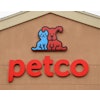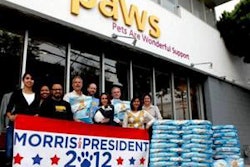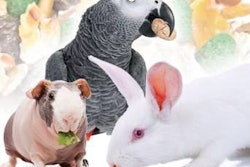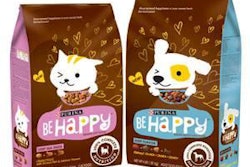Popular New Year's resolutions for people include losing weight, getting in better shape or similarly improving their health. Considering that so many pets are, like their owners, also fighting overweight or obesity, it would not be surprising if some pet owners put everyone in their families -- including the furry members -- on weight loss plans.
As of the end of 2011, 54% of US pets alone were overweight, according to their veterinarians; that equals 88.4 million cats and dogs, said the Association for Pet Obesity Prevention (APOP). Further, nearly 25% of US cats in the latest APOP survey and 21.4% of dogs were classified as obese. (A new survey showing 2012 data is likely to be released by APOP in February.)
Besides offering weight control and "lite" products, can petfood manufacturers do anything to help curb this increasing problem? There has been much discussion and controversy for several years over having calorie content and feeding amount information on petfood packages; while the Association of American Feed Control Officials might vote to require calorie contents on all petfood labels at its meeting this month, some people in the industry believe that won't help pet owners control their pets' weight. Their argument is that having such information on food products for humans hasn't really helped slow rising obesity rates in humans, so why would it work for pets? And they may be right -- though as the owner of two cats whose weight I struggle to control, I would welcome such specific information on cat food packaging. It's at least a start.
Perhaps new research coming out over the past year offers hope, not only for pudgy pets and their frustrated owners but also for the industry in terms of new product opportunities. And I mean true scientific, peer-reviewed research, not trends, fads or internet-fueled myths that, as with diets for humans, risk posing more threats than benefits. (A green bean diet for dogs? Really?)
For example, a study conducted by the Waltham Center for Pet Nutrition showed that when given a choice of various combinations of wet and dry foods, cats selected a mixture that provided them with a consistent intake of protein, fat and carbohydrates in their diet. With all combinations offered, cats selected foods that provided close to 52% calorie intake from protein, 36% from fat and 12% from carbohydrates. The study's authors noted that the cats' choice of foods was similar to what has been observed about feral cats' diet choices in other studies, indicating that house cats may have retained an instinctual ideal diet from their wild ancestors.
Also, at Petfood Forum 2013, Dr. Katherine Kerr of the University of Illinois will present information from studies on applying nutrigenomics to pet obesity. I'm not sure what all this means for possible new products, but at the very least, findings such as this might indicate new opportunities for our industry to educate pet owners and veterinarians. In the case of wet petfood, previous research has shown that feeding it might help a pet consume fewer calories, so perhaps the opportunity lies in developing wet products that owners find more convenient and economical to feed.
As for a cat like one of mine that not only turns his nose up at wet food but actually turns and runs the other way at the very sight or smell of it, there may be no hope!


















